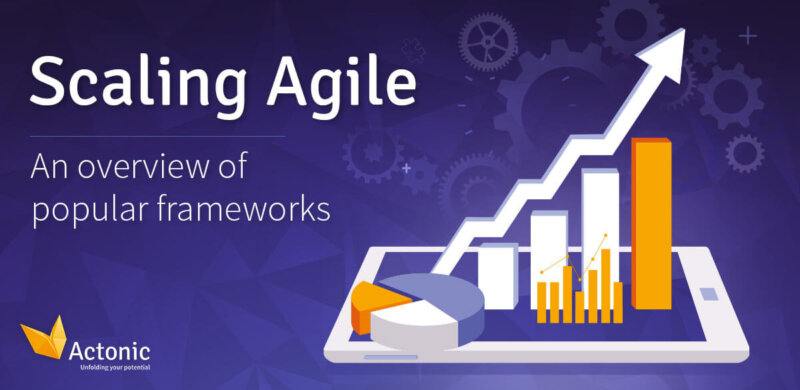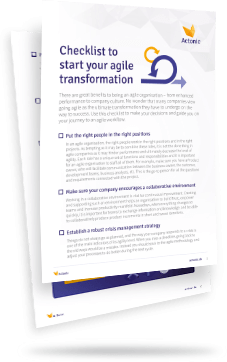What is “Scaling Agile”?
Simply speaking, scaling Agile means going from a few agile teams to multiple agile teams working together in a coordinated way. For some companies, on the other hand, scaling agile might mean extending this methodology beyond IT to achieve agility in other areas of business and project management. Find out how to enable scaling agile across all teams and discover 10 benefits of an agile workflow.
There are a number of defined approaches to handling the scaling process and a lot of confusion about which one should be chosen in different circumstances. In this article, we look at some of the most popular Agile scaling frameworks that are used to extend this wonderful methodology across a company.
Scrum of Scrums
Scrum of Scrums (SoS) is one of the oldest and most popular agile scaling frameworks introduced by Jeff Sutherland and Ken Schwaber. This Agile technique is used to integrate multiple co-located Scrum teams working on the same project. It requires continuous communication between different Scrum teams, especially in those areas where they overlap. Such communication and coordination happens during Scrum of Scrums meetings which are attended by the Scrum Masters of every team. The purpose of such meetings is to align the output and the goals for the next sprint. Scrum of Scrums is usually the first step that a company takes on the way to scaling Agile and it works even for larger organizations as long as SoS meetings are properly conducted.
Large-Scale Agile
Large-Scale Agile (LeSS) was developed and introduced by Bas Vodde and Craig Larman in 2005. They based their methodology on their experience working on large-scale projects while staying within the principles of Scrum. This technique means that all teams work on the same product and sprint planning happens in two separate meetings: the first meeting is between the Product owner and rotating team representatives; the second meeting is the meeting between all member of each team. Both meetings happen simulaneously.
LeSS promotes the following principles:
- Large-Scale Scrum is scrum,
- Empirical process control,
- Transparency,
- More with less,
- Whole product focus,
- Customer-centric,
- Continuous improvement towards perfection,
- Systems thinking,
- Lean thinking,
- Queuing theory.
In terms of scaling Agile, LeSS allows a business to reduce overheads, as it stands not only for Scrum, but also for less – “less roles, less management, less organizational structures”.
Disciplined Agile Delivery
Disciplined Agile Delivery (DAD) was developed by Scott Ambler and Mark Lines and is based on four lifecycles:
- Agile basic – very similar to Scrum,
- Lean/advanced – similar to Kanban and used to maximize workflows,
- Continuous delivery – continuous integration, DevOps and frequent delivery,
- Exploratory – very little planning with fast and frequent delivery.
DAD is more flexible in terms of organization and offers different ways of organizing teams around a deliverable – a feature, a component, etc. This framework offers guidance on the type of process you might want to implement. However, its deployment is rather challenging especially for more traditional organisations, and requires the help of experienced consultants.
SAFe
Scaled Agile Framework (SAFe) was created by Dean Leffingwell and allows businesses to apply Lean-Agile and Scrum principles at an enterprise level. It is a set of principles, practices and workflows enabling larger companies to move towards an agile way of working and offers guidance at the Portfolio, Value Stream, Program, and Team levels. For more information on SAFe, its principles and implementation process, see Be SAFe, Part 1: Core Principles and Benefits of the Scaled Agile Framework.
Conclusion
Whatever approach you choose, successful Agile scaling is bound to bring great benefits. Turning your whole company into an Agile organization will allow you to eliminate bureaucracy and focus on innovation rather than routine tasks. It will also help you adapt to changes, reduce costs and time-to-market while increasing employee engagement and customer satisfaction. If you need help scaling Agile across your enterprise, do not hesitate to contact us at [email protected]. Our experienced consultants will be happy to work out a tailored action plan and walk you through all the challenges of Agile scaling.

